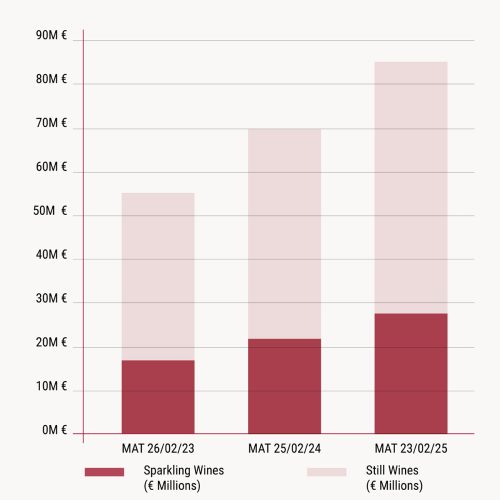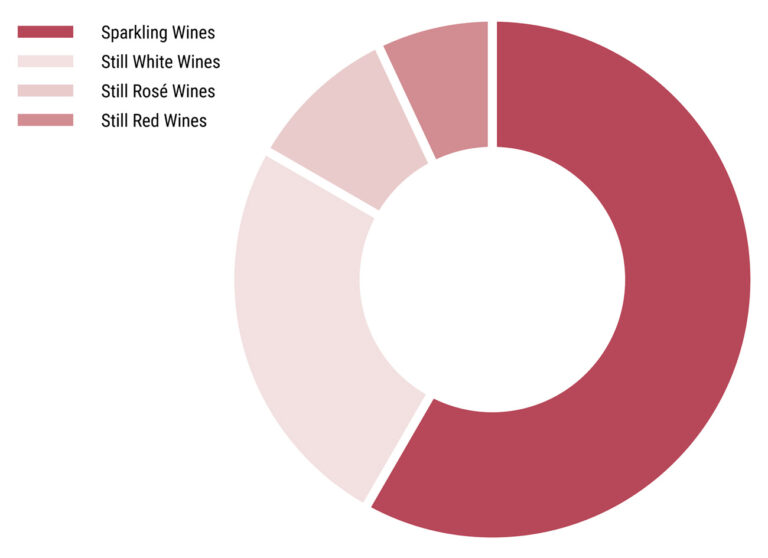Once considered a niche, the category of low -and no- alcohol wines is now the fastest-growing segment in the wine industry. But how is a high-quality dealcoholised wine produced? What are the technological challenges and market opportunities?
In this comprehensive guide, we explore the phenomenon that is redefining consumption habits, offering strategic insights to turn a complex challenge into a concrete business opportunity.
Why wine dealcoholisation is the trend of the moment.
The success of “No-Lo” (No or Low alcohol) products is far from a passing fad; it’s the result of deep social and consumer shifts. According to the Consumer Survey Nomisma Wine Monitor 2024, this global trend is driven by two well-established macro dynamics:
- Health and well-being: growing awareness is pushing consumers to seek products with fewer calories and without the effects of alcohol, yet without giving up the taste and social ritual of enjoying a good glass of wine.
- New consumption styles: younger generations, in particular, are adopting a more moderate and responsible approach to drinking. Alcohol-free wines fit perfectly within this new paradigm of balance.
A market in full expansion
Far from being a niche interest, the market for dealcoholised wines is experiencing exponential growth.
Data from key markets confirm this trend.
In the United States, retail sales have shown impressive three-year growth +54% in value and +31% in volume. Sparkling wines, in particular, are driving the category’s success and gaining strong consumer appeal. (Source: Nomisma Wine Monitor based on NielsenIQ data)

In Europe, the trend is equally well established. In Germany, the market is dominated by sparkling wines, which alone account for nearly €100 million in value, a clear indication of consumers’ preference for fresh and vibrant products. (Source: Nomisma Wine Monitor based on NielsenIQ data)

But who is the typical consumer?
An analysis reveals that in the United Kingdom, one of the most mature markets, 49% of consumers choose these products to avoid the effects of alcohol, while 36% are motivated by taste and 30% by the lower calorie content. (Source: Nomisma Wine Monitor based on NielsenIQ data)

Dealcoholisation Techniques
The dealcoholisation of wine is a delicate process that requires advanced technologies to preserve the wine’s organoleptic profile. The main methodologies are three:
- Spinning Cone Column (SCC): considered the benchmark technology, it operates under vacuum and at low temperatures (around 30–35°C). Its major advantage lies in its ability to separate the most volatile aromatic fraction before removing the alcohol, which is then reintegrated into the final product. This allows for superior preservation of the original bouquet, though it comes with high installation and operating costs.
- Reverse Osmosis: a membrane filtration process that separates water and alcohol (the permeate) from the remaining wine components (the retentate). The permeate is distilled to remove the alcohol and then recombined with the concentrated wine. This technology is more accessible but can subject the wine to mechanical stress and lead to a significant loss of aromas.
- Vacuum Distillation: based on the principle that, under reduced pressure, alcohol evaporates at very low temperatures (25–30°C). Although relatively simple and cost-effective, this process inevitably leads to the loss of the most volatile aromatic compounds, which evaporate along with the alcohol.
The Oenological challenge: what is lost when alcohol is removed
Alcohol is not just an intoxicating component; it is a key structural element. Its removal creates a deep imbalance, altering the wine’s sensory characteristics. The main challenges include:
- Loss of body and structure: the wine becomes watery, weak, and lacking in persistence.
- Aroma removal: even the most delicate techniques cause the loss of volatile compounds, resulting in a diminished bouquet.
- Taste imbalance: acidity becomes sharper and any bitterness more pronounced.
- Microbiological instability: without the preservative effect of alcohol, the product becomes far more vulnerable.
- Color alteration: changes in the wine’s physicochemical balance, particularly its redox state, can accelerate oxidative processes, leading to premature browning and a loss of brightness.
- Loss of CO₂: in sparkling wines, dealcoholisation causes an almost complete loss of carbon dioxide, making a careful secondary fermentation or carbonation step necessary.
Ever’s Response: an integrated approach
Creating a high-quality dealcoholised wine does not simply mean removing something, it means rebuilding a new balance.
Ever’s approach is based on an integrated protocol that intervenes at every stage to ensure an excellent final result.
Phase 1: the base
Everything begins with the creation of an exceptionally rich base wine, almost a “super wine”, to anticipate future losses. The strategy involves the use of specific yeasts to maximize glycerol production (for body and softness) and the early addition of oenological tannins and polysaccharides to build a robust structure capable of withstanding the process.
Phase 2: protection
During transport and processing, the wine undergoes oxidative stress. It is essential to protect it with a solid REDOX system, using gentle antioxidants such as Bluetann or Evertann Blanche Cru (based on tannins and yeast derivatives), ideal for safeguarding sensitive elements (polyphenols, aromas) without weighing down the wine.
Phase 3: reconstruction
Once dealcoholised, the product must be rebuilt. This is the most creative stage, where the winemaker’s art, supported by the right tools, is fundamental. This phase involves:
• Strategic blending: combining different bases to achieve a new taste balance.
• Body enhancement: using soft tannins and polysaccharides (rondeur) to restore volume and tactile pleasantness.
• Taste correction: balancing acidity and roundness with rectified concentrated grape must (RCGM) or other solutions.
• Carbonation management: fine carbonation is essential to restore freshness, especially in sparkling wines.
Phase 4: stabilization and preservation
A 0% alcohol product is extremely delicate, and microbiological stability becomes a primary objective. Sterile filtration and the use of fining agents such as chitosan are required to ensure microbiological cleanliness, along with correct sulfur dioxide management to guarantee a long shelf life.
The regulatory framework in brief
The production and marketing of dealcoholised wines are governed by clear European regulations defining product categories, permitted techniques, and compliance limits.
Regulatory clarity is essential to ensure transparency for consumers and provide certainty for producers.
According to EU Regulation 2021/2117, two main categories are defined:
- Dealcoholised wine: actual alcohol content ≤ 0.5% vol.
- Partially dealcoholised wine: actual alcohol content > 0.5% vol and below the minimum required for the “wine” category.
- Permitted oenological practices: currently, the practices allowed for these products are those authorised for traditional wines. The OIV (International Organisation of Vine and Wine) is working to introduce specific practices to better address the challenges of these new products, such as the addition of carbon dioxide and acidification, to improve balance and shelf life.
An opportunity to seize, a path to explore, together
Market data show that consumers are increasingly interested in alcohol-free wines: in the United States, sales are growing at double-digit rates; in Germany, sparkling wines dominate the category; and in the United Kingdom, 49% of consumers choose dealcoholised wines to reduce the effects of alcohol, evidence of a well-established, cross-generational demand.
This new category brings not only business opportunities but also specific technical requirements, such as shelf-life management: dealcoholised wines, lacking the preservative effect of alcohol, require targeted protocols to ensure microbiological stability and maintain quality and drinkability over time.
Dealcoholised wine is no longer an alternative, it is a strategic extension of the winery’s portfolio, capable of reaching new consumers and meeting the needs of an evolving market. The technological complexities are real, but with an integrated approach and the right oenological tools, it is possible to produce alcohol-free wines that are not only technically stable but genuinely enjoyable.
Ever stands alongside wineries in this new oenological frontier, providing not only innovative products but also the strategic know-how to turn this evolution into a tangible opportunity.

 IT
IT